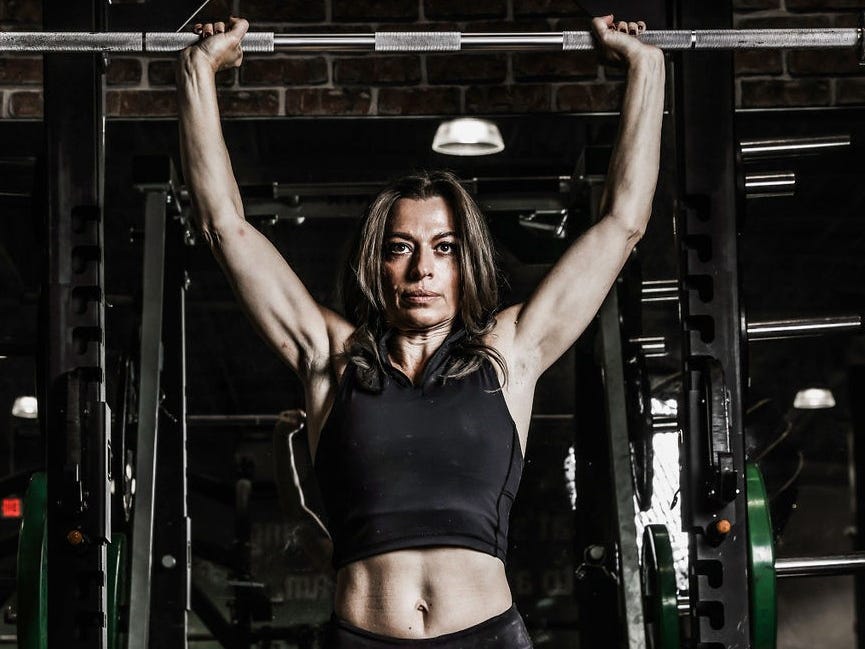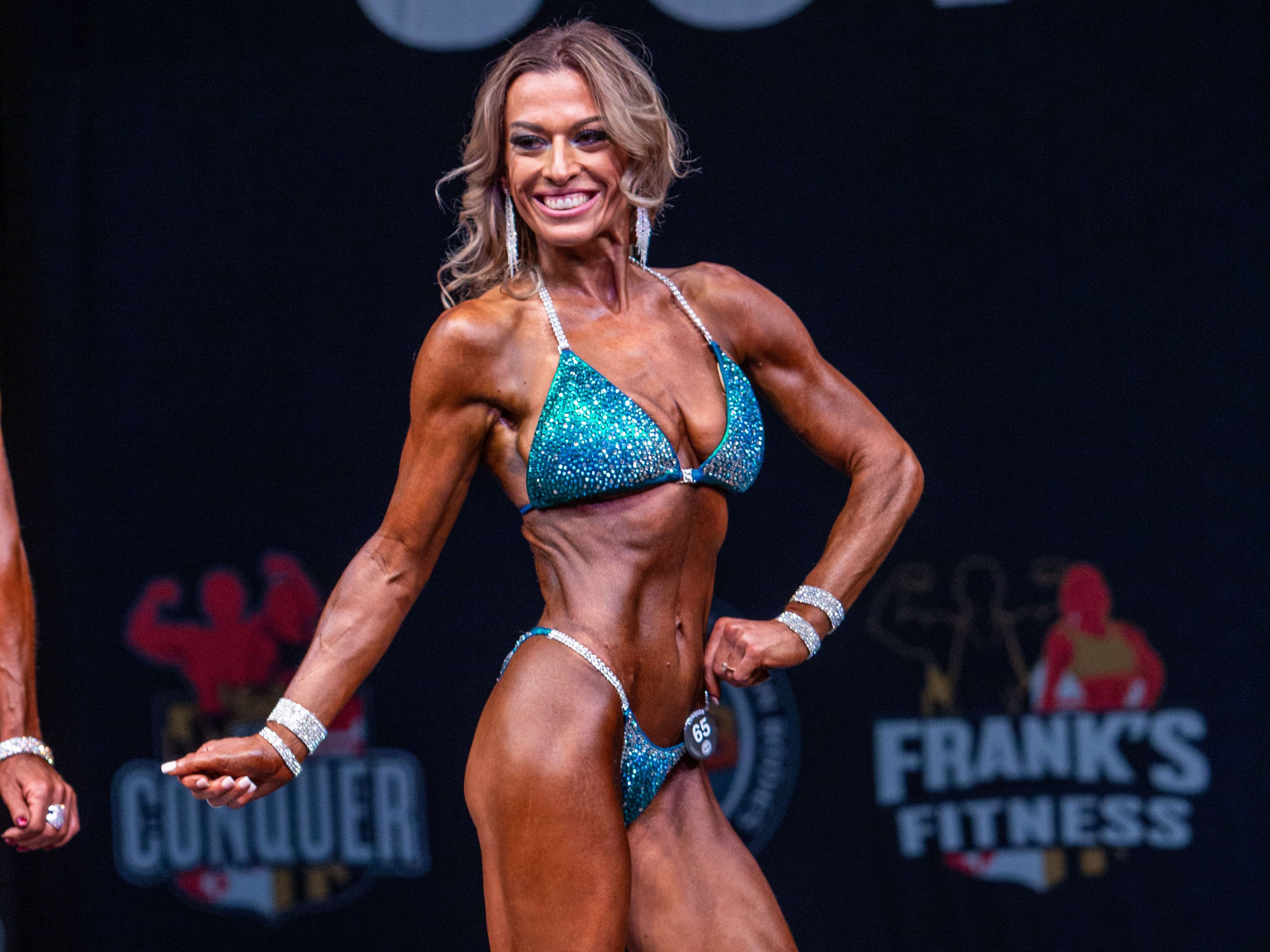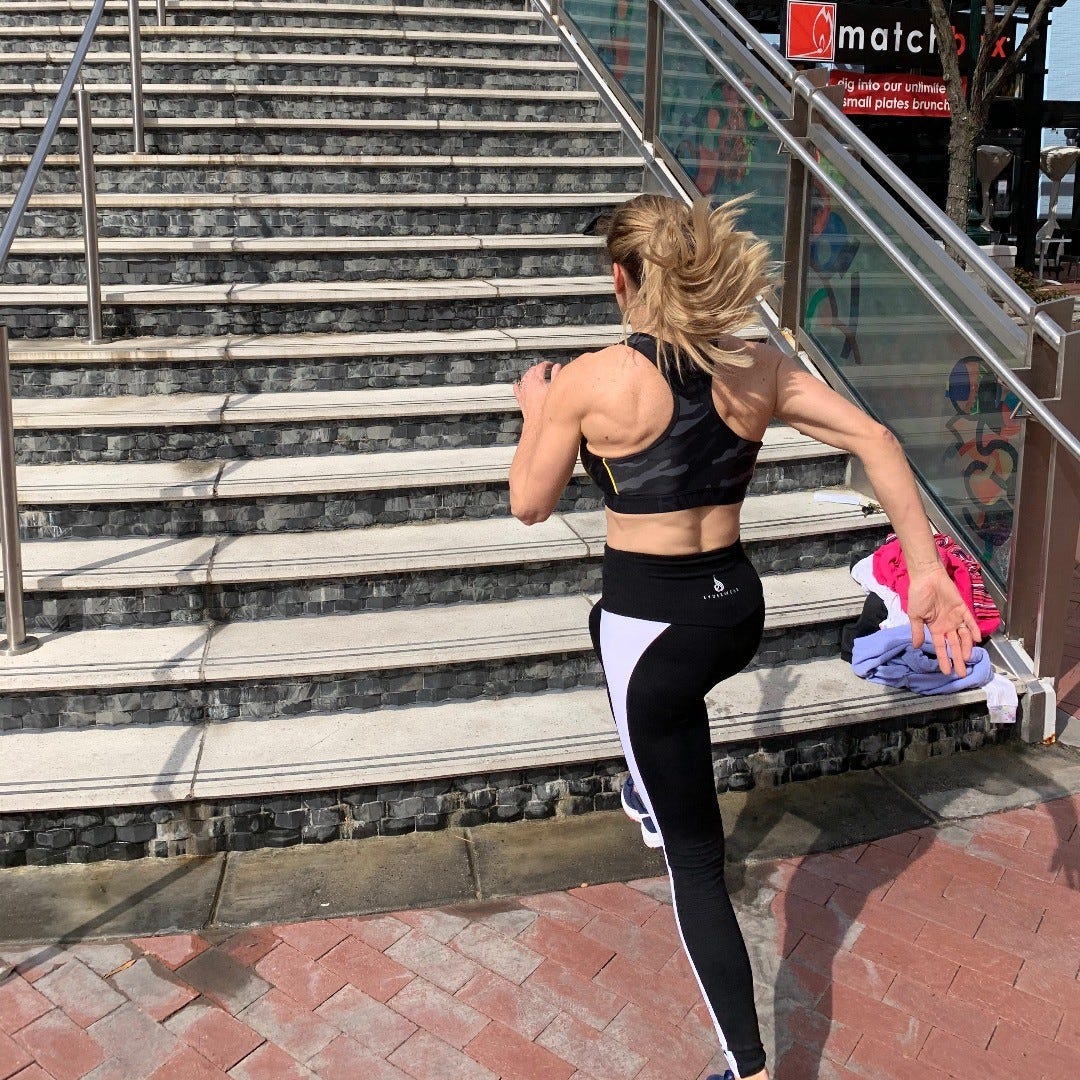
Tina Krohn/Courtesy of Anne Marie Chaker
When Anne Marie Chaker felt like her life was falling apart, bodybuilding lifted her out of a slump.
Despite a successful, prestigious career in journalism, Chaker said her 40s hit with “every kind of horrible, terrible thing that could happen”: postpartum depression, severe insomnia, a growing drinking habit, and a disintegrating marriage.
While traveling to coach at a tournament for her daughter’s hockey team, Chaker decided to hit the treadmill at the hotel gym. She found destiny instead, in the form of a jacked hockey mom whose daughter was on the same team as Chaker’s.
“The combination of know-how, how she was crushing this workout, and her muscles, I thought, “that is what I want to be,” Chaker said.
After learning her new friend did bodybuilding competition, Chaker got the name of her coach and reached out.
From there, she started moving heavy weights, eating more protein, and eventually competing in natural bodybuilding, ranking high enough she earned the right to enter pro competitions.
The former Wall Street Journal reporter said the pivot changed her life, not just her physique.
“I would hit the gym, come back to my desk and I could even hear it in my voice. I sounded much more confident,” she told Business Insider.
Chaker, now 50, is author of the new book “LIFT,” which is part personal story, part deep dive into the history of women’s fitness, and part roadmap to “beasting out,” building muscle, strength, and confidence.

Courtesy of Anne Marie Chaker
Simple changes like strength training, eating more, and working with a coach helped Chaker learn to take up space for herself instead of striving to be skinny and demure.
“As women, we should capitalize on our strength and stop listening to the bullshit that we need to be small and thin,” she said.
Ditching cardio and picking up weights
Chaker said she was initially deterred from heavy strength training by the persistent myth that lifting weights will make women bulky (or that it’s a bad thing for women to get swole).
But when she started with the basics, like deadlifts, squats, and presses, it became clear that she was getting leaner and stronger without hours on a treadmill. And forget light weight, high reps for muscle “toning.”
“Cardio, which I thought was the main thing, that didn’t even enter the picture,” she said. “It was all about lifting heavy weights.”
Beyond the physical benefits, Chaker said lifting weights helped her stay focused and gave her a stronger sense of purpose too.
“Finding strength training was really a way for me to connect not just to my body, but also to my mind and my spirit,” she said. “I feel like a completely different person after a good lift.”

Tina Krohn/Courtesy of Anne Marie Chaker
Eating more was a game changer
Prior to bodybuilding, Chaker said her approach to food was as an afterthought, grazing on leftover bites from her kids’ plates or whatever convenience meals she could find on the go.
It was a shock to find consuming too few calories and nutrients had held her back from building muscle and strength, since years of diet culture had reinforced the misconception that eating less was healthier.
“It didn’t even occur to me that I wasn’t eating enough,” she said.
Prioritizing whole food and plenty of protein made it easier to cut back on junk and even curb her drinking, according to Chaker.
“Feeling satiated helped wean me off of craving alcohol,” she said.
Forget long weekend workouts — small bouts of daily exercise make the difference
Chaker quickly learned that even as a competitive bodybuilder, she didn’t need to drop everything for elaborate gym routines.
Chaker said her current routine involves about an hour a day lifting weights.
Most people, especially beginners, can see major progress in much less time. As little as two strength training sessions a week can help build muscle, and half an hour is plenty of time to make progress, according to personal trainers.
“You don’t need hours on end,” Chaker said. “Having that time and space, you alone with the bar 30 minutes, is finding this primal thing in you that can really reshape your mindset.”

Courtesy of Anne Marie Chaker
You can transform your body at any age
Starting out (or getting back) in strength training can feel intimidating, particularly for women.
But, Chaker said, it’s never too late to focus on fitness. People in their 50s, 60s, and 70s can excel at exercise.
Chaker said, in her experience, older athletes benefit from having more life experience: she’s stood onstage next to women years younger than her in bodybuilding competitions, and won.
“I had the advantage because you could see the years of athleticism on my physique. The muscles are more developed, they’re tougher,” she said.
The post A woman switched from a desk job to bodybuilding in her mid-40s with 4 simple strategies. It revitalized her life. appeared first on Business Insider.




